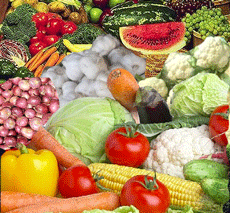Inflation skewed in favour of urban India: survey
21 Oct 2015
While inflation has been slowing both in rural and urban areas of India, there is a widening difference between the two as rural inflation is decelerating at a much slower pace.
 The resultant gap between rural and urban inflation has more than doubled over the last one year, data analysed by HSBC Global Research show.
The resultant gap between rural and urban inflation has more than doubled over the last one year, data analysed by HSBC Global Research show.
''Inflation has fallen strikingly over the last several months, but the gains are not equally distributed … rural inflation is running higher than urban inflation and its underlying trend is higher than the Reserve Bank of India's target,'' analysts at HSBC Global Research wrote in a note.
Urban inflation momentum, according to the analysis, has slowed to 4.5 per cent, which is lower than the RBI's target level of 6 per cent. The trend in price gains in rural India, however, is running at 6.5 per cent.
The 'excess inflation' in rural India, HSBC noted, is arising from food, fuel, transportation as well as from core inflation. The difference between rural and urban inflation is most stark for fuel and transportation, followed by core and to a lesser extent food.
Consumption data from the National Sample Survey Organisation (NSSO suggests that rural India's fuel mix is more geared toward domestically produced firewood, chips and biogas inputs, which are not a part of the global deflation cycle. On the other hand, fuel products more widely used in urban India, such as LPG, petrol and diesel, have benefited from lower global prices.
''Rural India has some structural disadvantages vis-a-vis urban India: structural bottlenecks are harsher, transport networks sparser and distribution channels insufficient … and this relative disadvantage is showing up more so now, as urban India is benefitting from lower global prices while rural India, partly because of its structural ailments, is not being able to partake with equal vigour,'' said HSBC.
Despite two successive years of drought, overall food inflation in India has remained tepid, as low global prices have made it possible to import food products that are in short supply. Rural Indians, however, do not seem to have benefitted as much from food imports as their urban counterparts, according to the analysis.
Vegetables and oilseeds are seeing more stubborn price trends in rural areas than they are at urban centres possibly because insufficient distribution channels may be hindering imported vegetables and oilseeds reaching rural areas, HSBC said. ''While much of India's food is produced in rural India, rural Indians seem to be facing higher food price pressures, at least for some items.''
Separately, higher inflation for perishables such as meat and fish again point towards relatively worse distribution channels and may have more to do with cold storage, it said.
Its analysis of the rural-urban output shows that a steeper decline in the potential growth of rural India is likely driving the excess core inflation. It is possible that insufficient investment, growing bottlenecks and impact of two successive droughts have contributed to lowering rural India's potential (or trend) growth and the narrow output gap is keeping core inflation from slowing rapidly in rural areas, despite weak growth.
''Higher investment in rural infrastructure and meaningful agricultural reforms are needed to make growth weather proof and put it on a higher, more sustainable path'' to enable the RBI to meet its 4 per cent inflation target sustainably, the research noted.































